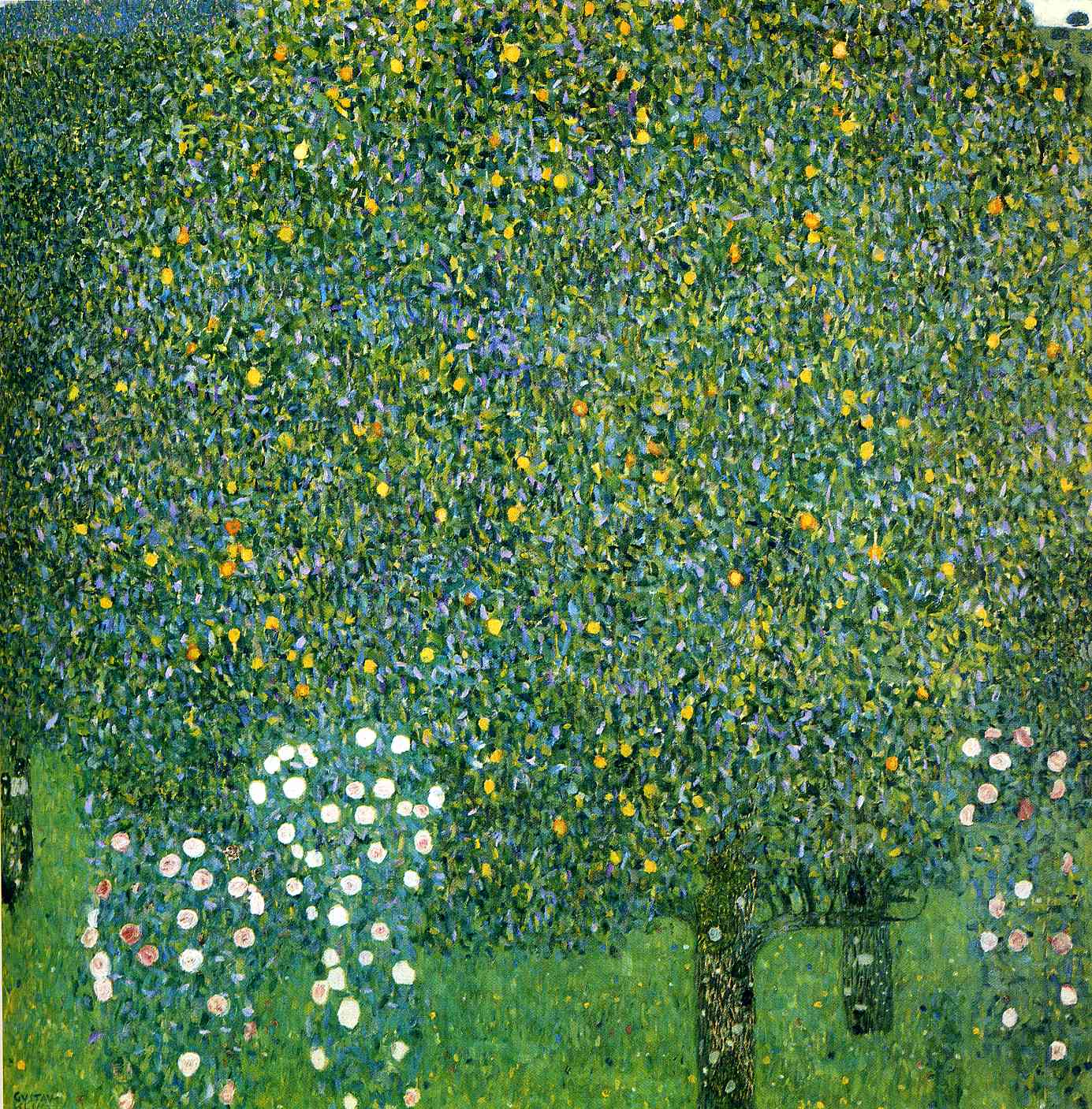art-Klimt.com
Gustav Klimt 1862-1918
Gustav Klimt - Roses under the Trees 1905
 Roses under the Trees |
From Musée d'Orsay, Paris:
Rosebushes under the Trees was produced, as were most of Klimt's landscapes, during the summer holidays of 1904 and 1905, when he stayed in Litzlberg. The canvas is covered with dabs of colour and very small brush strokes in the style of a decorative motif or a mosaic. Klimt's landscapes became increasingly abstract, although he continued to work directly from the motif. What the painter observed merely served as a stimulus. The real subject of the painting is the pictorial structure itself.
The foliage, above a narrow horizontal band of meadow, forms the main part of the composition. Klimt developed, across the whole painting, a network of small dabs of paint ranging from light green to dark green, with contrasting tones of pink, mauve and yellow. This mass of flecks causes the landscape elements to dissolve into rudimentary features - suggested tree trunks and minute differences in colour between various types of leaves - which alone enable the scene to be identified as an orchard. The sky is only glimpsed through tiny gaps in the top, left and right corners.
Unlike the Impressionists, Klimt was not interested in atmospheric variations. He preferred to take his inspiration from the plastic solutions of the Neo-Impressionists, using his knowledge of French painting to develop a very personal, formal language. Finally, his ornamental approach covers and supplants the landscape with a deliberate screen, as if he is driven by a deep-rooted horror of emptiness.